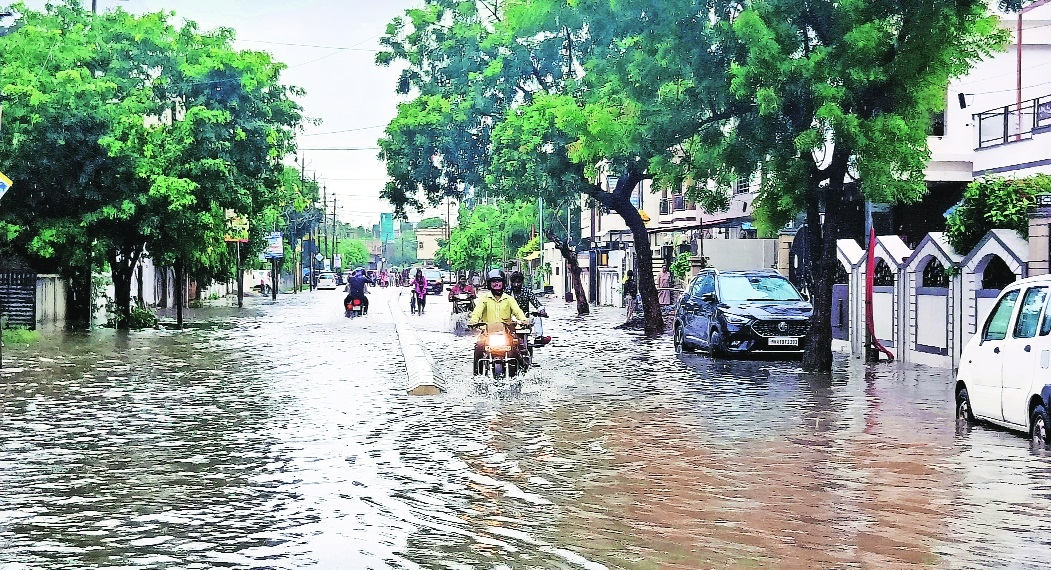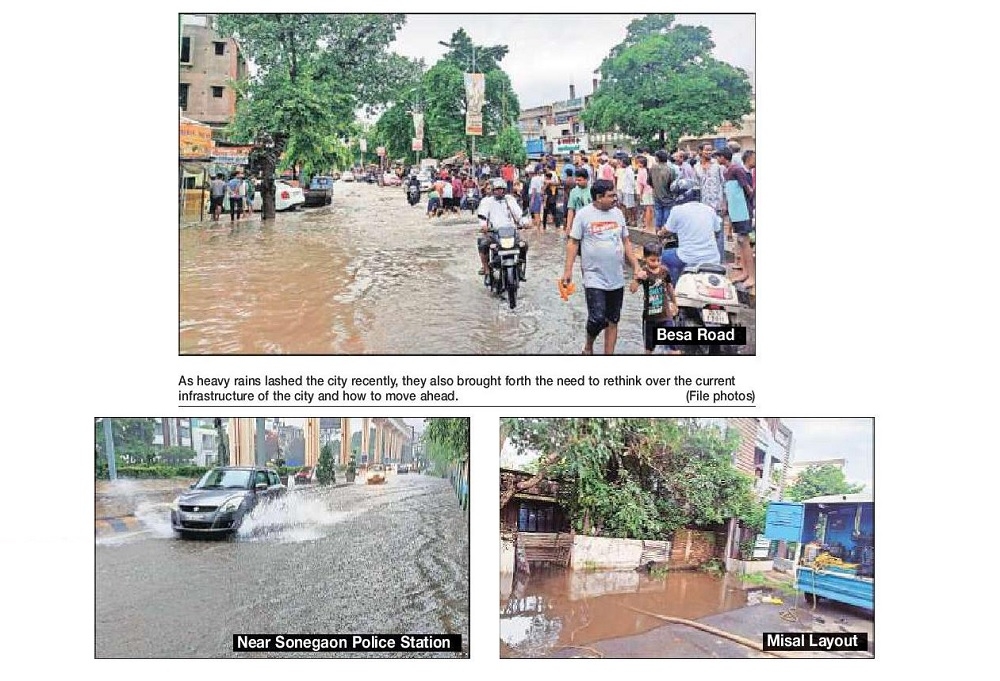Views differ, suggestions vary, but city needs severe course correction!
| Date :23-Jul-2024 |

This is the severe situation of water-logging in Kushi Nagar area. Due to heavy rains that battered the city on Saturday, the haphazard ‘development’ of the civic authority has come to fore. (File pic)
By Sagar Mohod :
A committee of experts, citizen representatives needed to review development projects across city
Maintenance of existing infra need of the hour, else it will lead to unmanageable conditions during and after floods
Views differ, suggestions are varied but one thing that everyone agrees to is that Nagpur now needs major course correction to avoid flooding of homes and properties in future. Given the fact that climate change is going to impact everyone's lives, authorities need to take citizens into confidence before executing major projects. One of the topmost factor that is now needed is study of drainage system, conduct area wise mapping of water flow to help understand the gravity of the problem and thereafter commission the infrastructure
projects.

Ar Sujit Rodge, President, Indian Institute of Town Planners, Nagpur Branch, talking to ‘The Hitavada’ said that city drainage system is entirely dependent on Naag River. But for the same, the area-wise drainage network needs to be aligned, levels matched to ensure systematic release of rain water through proper piping system into Naag River. Basically a zoning and categorisation of flood prone areas is needed for which a proper survey needs to be commissioned in first place to identify the spots where rain water gets accumulated. Then comes the aspect of analysing the reasons, whether there is some obstruction for free flow of water or any other reason. For example, Ar Rodge cited example of Sitabuldi, the heart and commercial important place of city, needs to be studied in detail, as to structures that have come here and future projections.
The adjoining areas to should be covered to get a perfect view and once the maps are in place and post analysis, the proper layering of water flow channel should be taken-up to ensure every drop is properly drained into the designed network.
But first and foremost a Technical Committee comprising of experts including citizens representatives needs to formed at city level to review any development project. Just while finalising the Development Map of city, public opinion and objections are invited, same is also needed for big ticket projects. Further he was of opinion, survey of smaller areas and then preparing city flow map as then only situation like the one witnessed on Saturday can be avoided.
Similarly, Area/Zone-wise level benchmarks can be fixed, this level is followed in a project, as is done with mean sea level. Or simply, plinth level of building can be fixed while sanctioning new construction projects visa-vis reference to this benchmarks level, needs to be examined.
Most importantly, inter connectivity of water bodies at regional level and its impact and relationship to flooding need a detailed study by considering its pros and cons. And last but not the least, inter-departmental co-ordination will play a major role while preparing city plans and handling the flood situations as well.
Also Ar Rodge pointed out that while we are all for new construction, maintenance of existing infrastructure is need of hour or otherwise it will lead to more devastating and unmanageable conditions during
and after the flood. And more importantly, instead of just pre-monsoon desilting and cleaning of river and drains, the exercise should be conducted round the year. Piecemeal working now needs to be avoided and full proof system needs to be designed if the planners and Government is serious about safe guarding citizens’ lives and properties.
‘The Hitavada’ also spoke to Sandeep Shirkhedkar, Civil Engineer, who admitted that post-construction of cement roads the water flow has been impacted to some extent. Normally, rain water used to move from left to right but there seems to little bit trouble in this flow. Some corrective measures can be planned by authorities by laying proper pipelines so that stagnant water can be avoided.
Defending the height of concrete roads, same are done after taking into requirements of today and future when load is expected to rise in view of newer designs in goods carriers. He dismissed the idea of scrapping the WBM roads before laying the concrete layer saying this would only add to cost. While designing concrete structure the stiffness test of base is done and since WBM has stabilised after years, just white topping cement roads on top of it are good enough.
Now that Nagpur Municipal Corporation (NMC) is going to undertake two mega projects that are aimed at laying new drainage system and hence proper consultations with stakeholders is needed. One project is Naag River pollution abatement that will also see laying new drain lines. And second one is South Zone sewage project wherein the old sewage lines are going to be replaced and new drain lines laid to address new challenges.
But given the past experience when mega infrastructure projects instead of helping solve the problems threw up new surprises, the citizens are wary of such constructions. Hence a scientific study of rain pattern, designing and constructing proper drainage flow can provide some solution from these repeated issue of water logging and choked sewage lines.